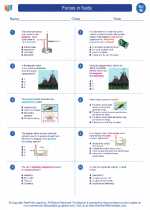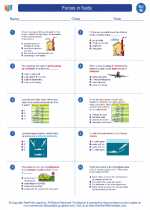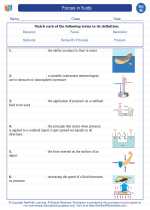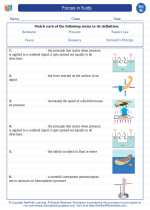Forces in Fluids
Definition
Forces in fluids refer to the interactions and effects of forces within liquids and gases. These forces include buoyancy, viscosity, and drag.
Buoyancy
Buoyancy is the upward force exerted by a fluid that opposes the weight of an immersed object. It is dependent on the density of the fluid and the volume of the object immersed.
Viscosity
Viscosity is a measure of a fluid's resistance to deformation. It determines how easily a fluid can flow. High viscosity fluids are thick and flow slowly, while low viscosity fluids are thin and flow quickly.
Drag
Drag is the force that opposes the motion of an object through a fluid. It is caused by the fluid's resistance to the object's motion and can be affected by the shape and speed of the object.
Applications
Understanding forces in fluids is important in various real-world applications such as designing efficient aircraft, optimizing the performance of vehicles, and predicting the behavior of floating objects in water.
Study Guide
- Define buoyancy and explain how it affects the behavior of objects in fluids.
- Discuss the concept of viscosity and provide examples of high and low viscosity fluids.
- Explain the factors that affect drag and how it influences the motion of objects through fluids.
- Identify and analyze the forces acting on a submerged object in a fluid.
- Explore real-world applications of forces in fluids and their implications for technology and engineering.






